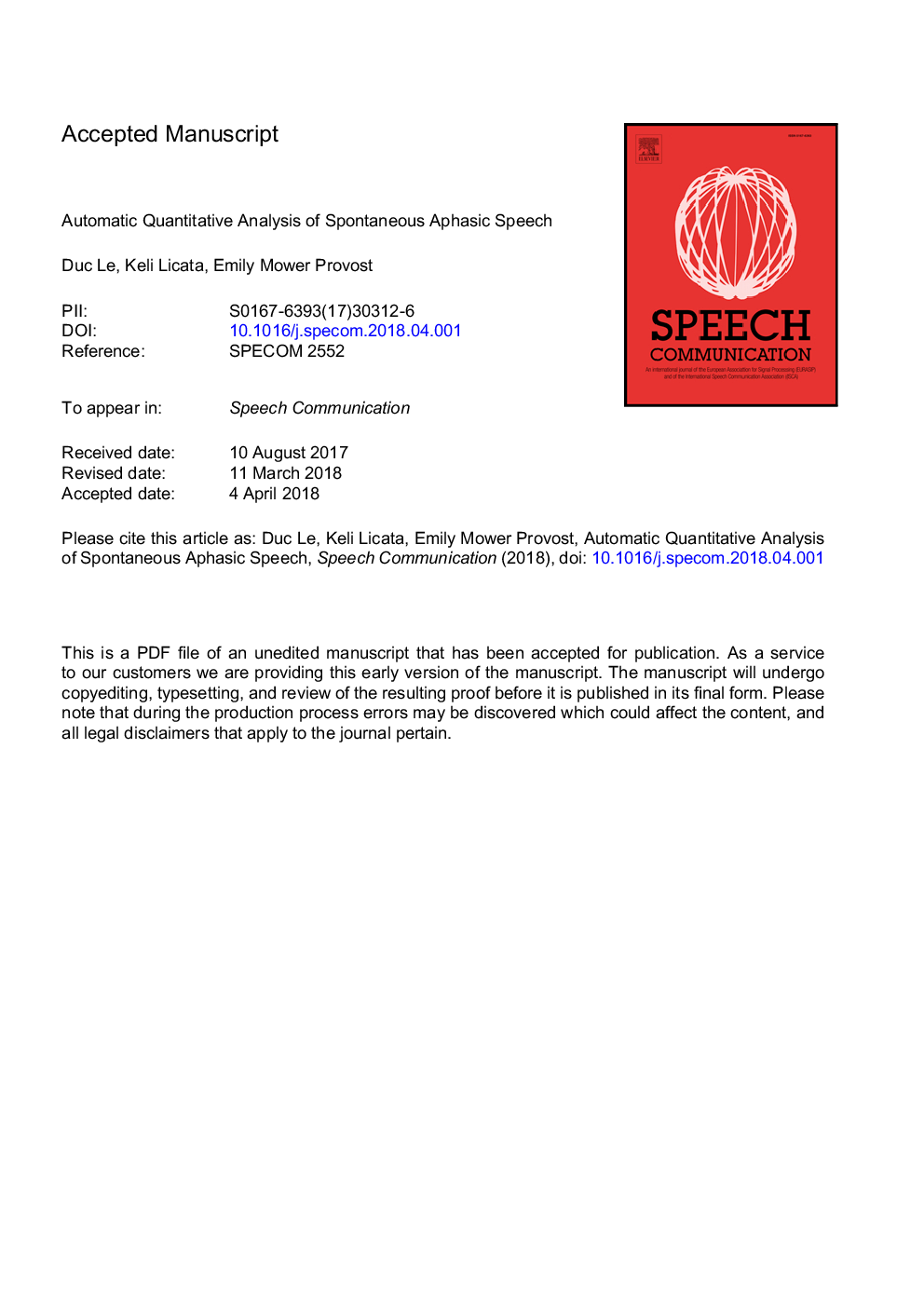| Article ID | Journal | Published Year | Pages | File Type |
|---|---|---|---|---|
| 6960517 | Speech Communication | 2018 | 14 Pages |
Abstract
Spontaneous speech analysis plays an important role in the study and treatment of aphasia, but can be difficult to perform manually due to the time consuming nature of speech transcription and coding. Techniques in automatic speech recognition and assessment can potentially alleviate this problem by allowing clinicians to quickly process large amount of speech data. However, automatic analysis of spontaneous aphasic speech has been relatively under-explored in the engineering literature, partly due to the limited amount of available data and difficulties associated with aphasic speech processing. In this work, we perform one of the first large-scale quantitative analysis of spontaneous aphasic speech based on automatic speech recognition (ASR) output. We describe our acoustic modeling method that sets a new recognition benchmark on AphasiaBank, a large-scale aphasic speech corpus. We propose a set of clinically-relevant quantitative measures that are shown to be highly robust to automatic transcription errors. Finally, we demonstrate that these measures can be used to accurately predict the revised Western Aphasia Battery (WAB-R) Aphasia Quotient (AQ) without the need for manual transcripts. The results and techniques presented in our work will help advance the state-of-the-art in aphasic speech processing and make ASR-based technology for aphasia treatment more feasible in real-world clinical applications.
Related Topics
Physical Sciences and Engineering
Computer Science
Signal Processing
Authors
Duc Le, Keli Licata, Emily Mower Provost,
